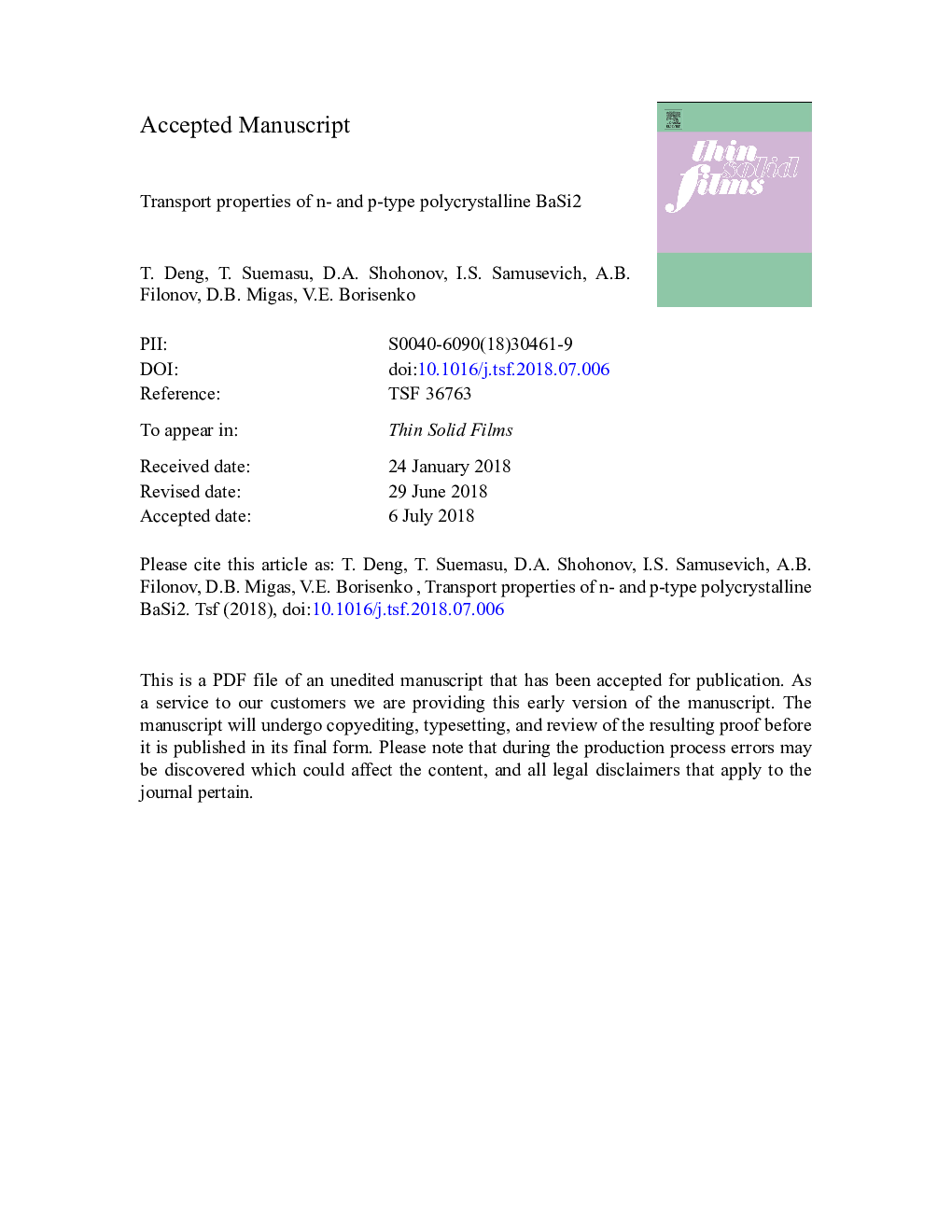| Article ID | Journal | Published Year | Pages | File Type |
|---|---|---|---|---|
| 8032476 | Thin Solid Films | 2018 | 31 Pages |
Abstract
Electron and hole mobilities versus temperature in semiconducting barium disilicide (BaSi2) have been systematically studied both experimentally and theoretically. The experiments were performed with undoped 250â¯nm-thick BaSi2 polycrystalline films grown by molecular beam epitaxy. The grain size of films ranged from 0.2 to 5â¯Î¼m with the electron concentration of 5.0â¯Ãâ¯1015â¯cmâ3. To investigate the hole mobility, B-doped p-BaSi2 films with various dopant concentrations were fabricated and studied. The experimental temperature dependence of the electron mobility in the range of 160-300â¯K was found to have a maximum of 1230â¯cm2/Vâs at 218â¯K, while at room temperature (RT) it dropped down to 816â¯cm2/Vâs. We demonstrate that the temperature dependence of the electron mobility cannot be adequately reproduced by involving standard scattering mechanisms. A modified approach accounting for the grained nature of the films has been proposed for the correct description of the mobility behavior. The highest hole mobility in p-BaSi2 films reaching ~ 80 or 200â¯cm2/Vâs (for the films grown on (111) or (001) Si substrates, respectively) at RT is about an order or four times of magnitude smaller than that in n-BaSi2 films. Such a great difference we ascribe to the specific features of electron-phonon and hole-phonon coupling in semiconducting BaSi2.
Keywords
Related Topics
Physical Sciences and Engineering
Materials Science
Nanotechnology
Authors
T. Deng, T. Suemasu, D.A. Shohonov, I.S. Samusevich, A.B. Filonov, D.B. Migas, V.E. Borisenko,
